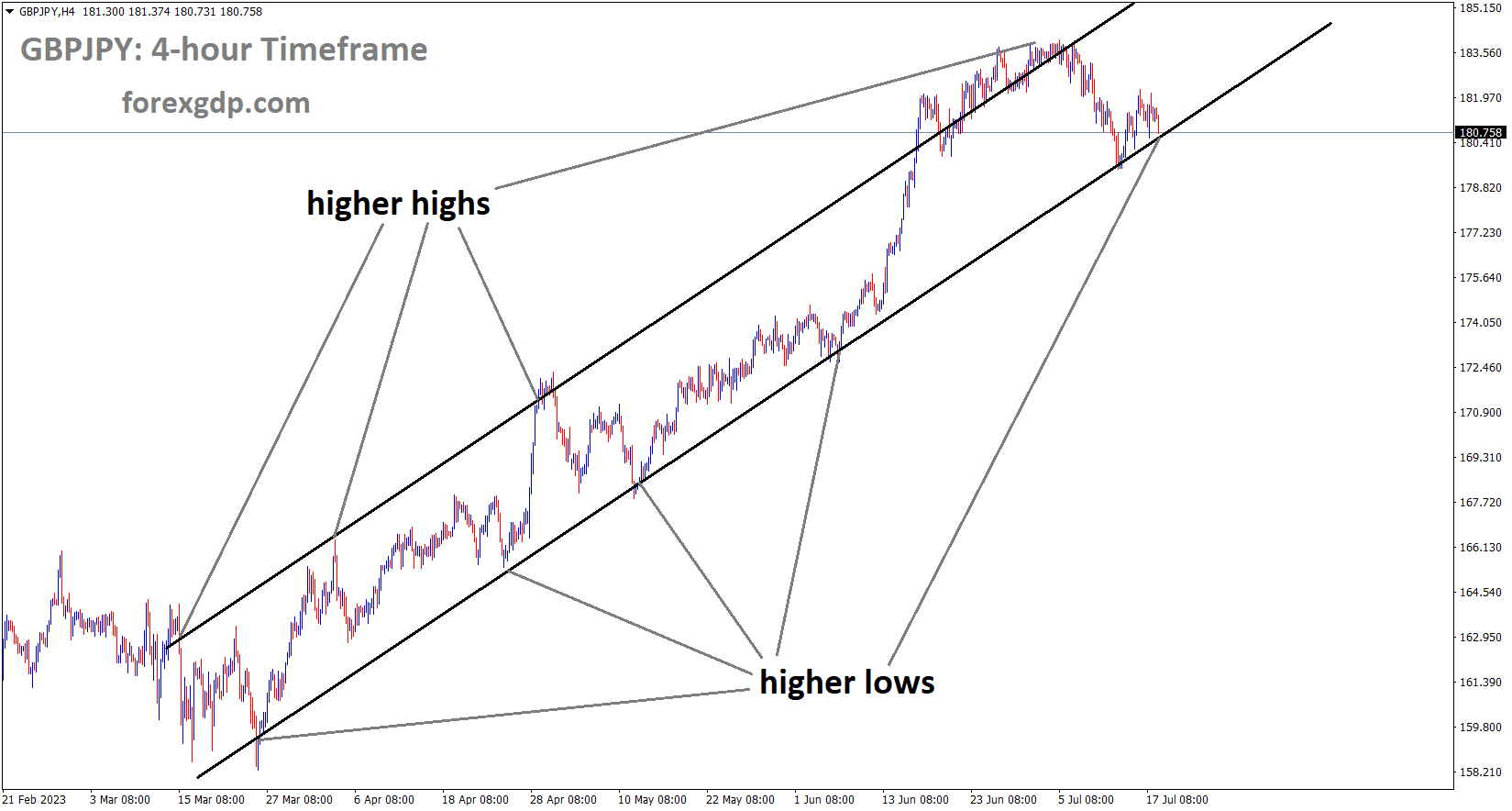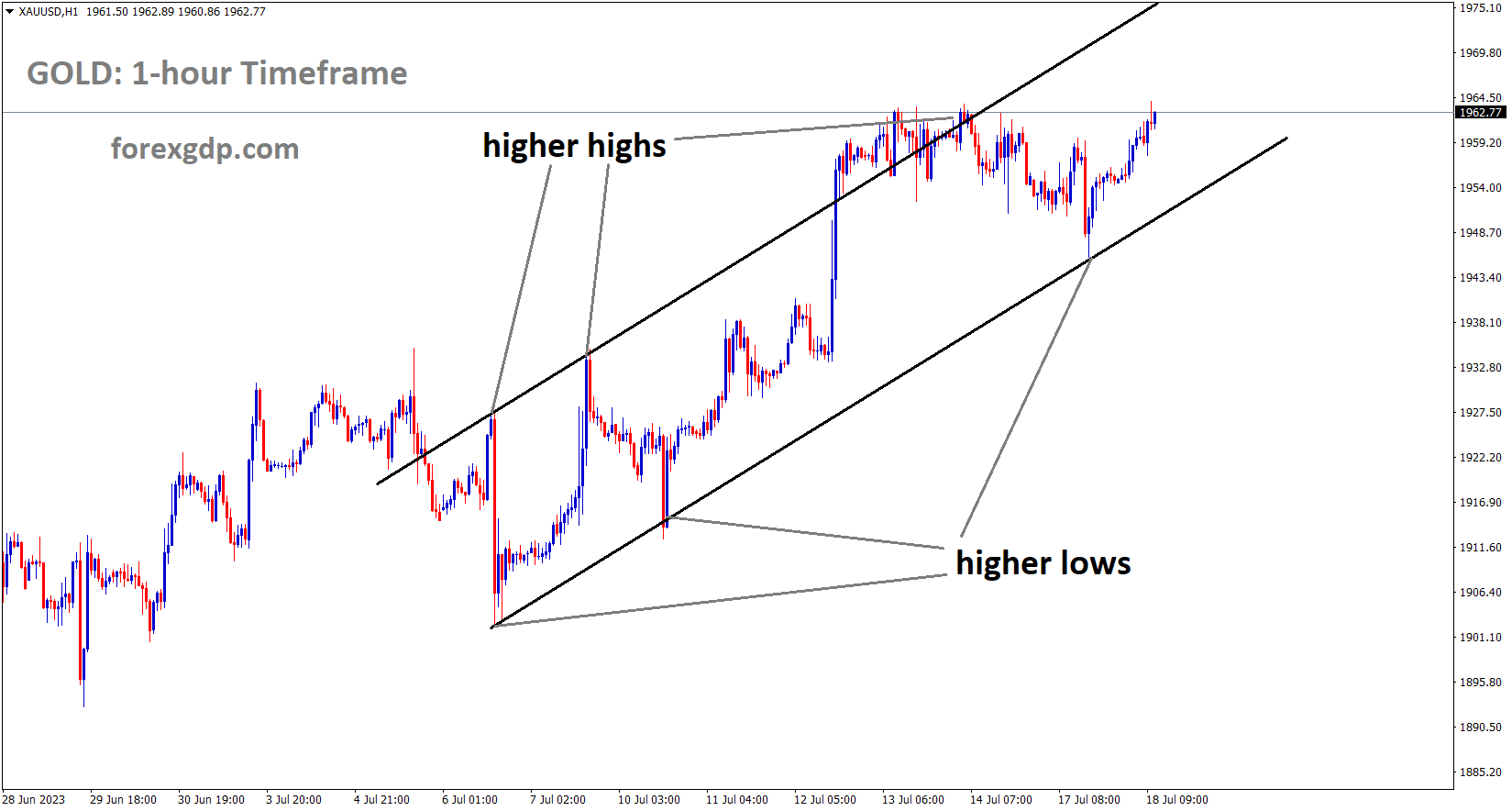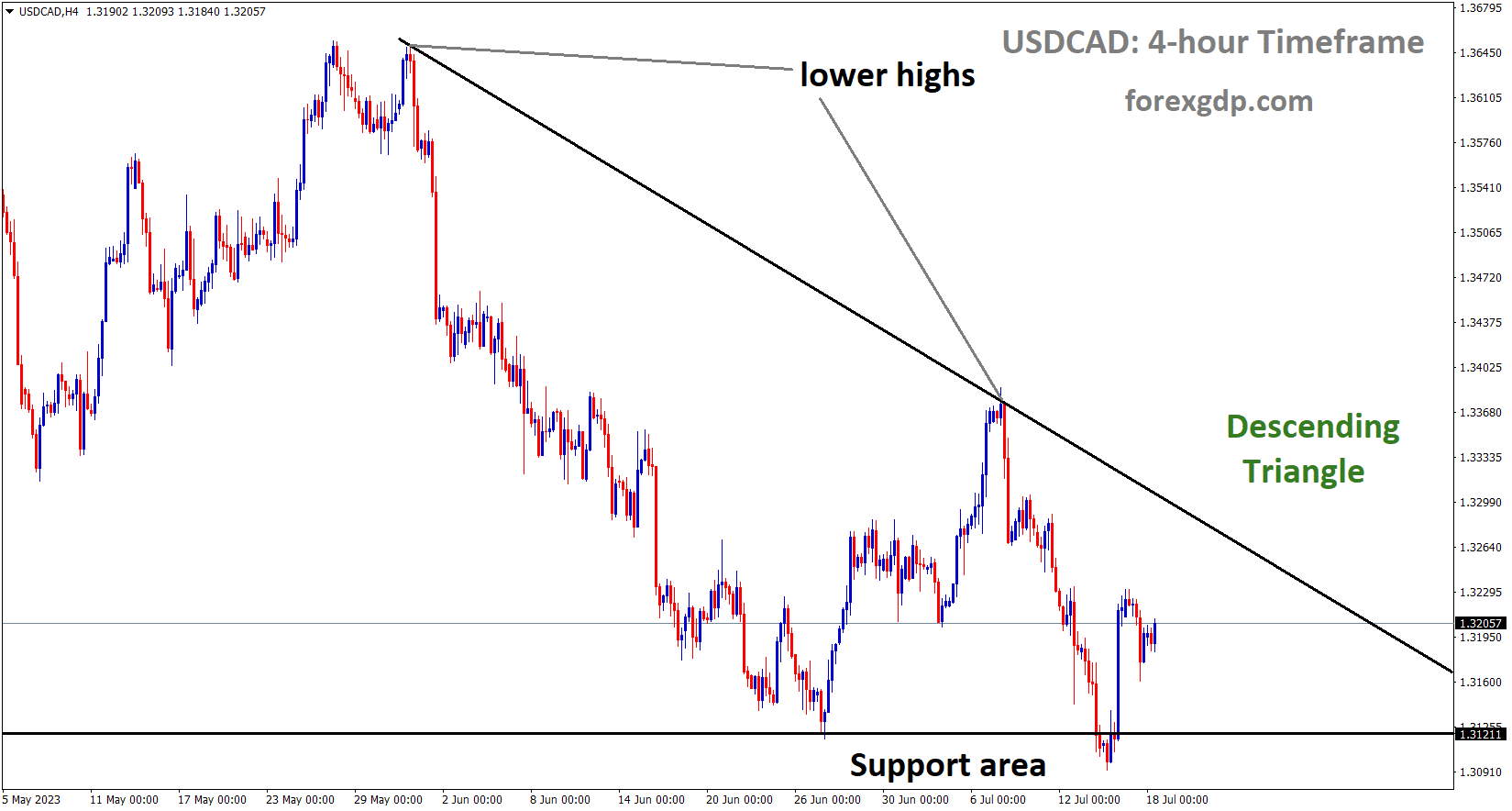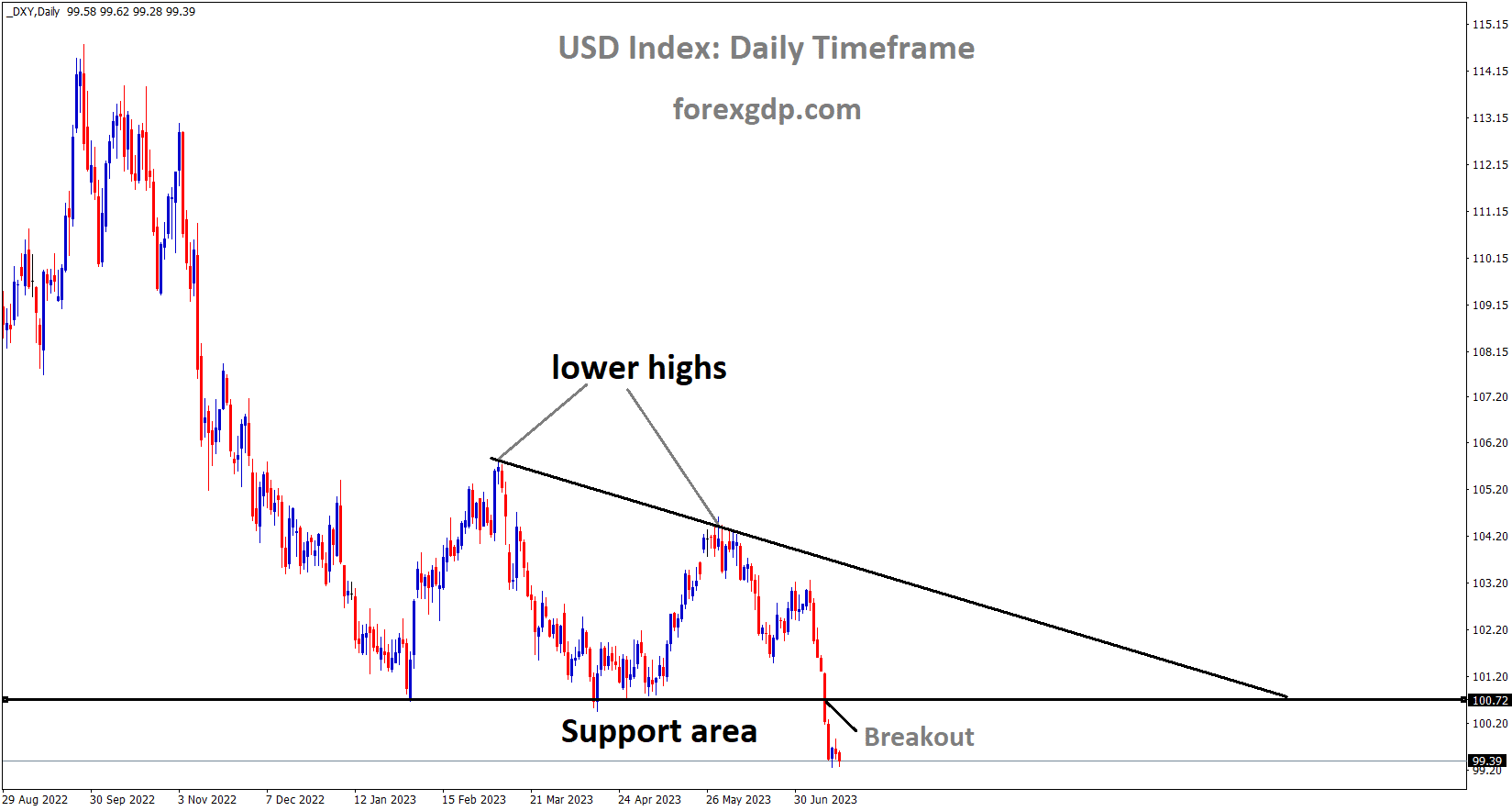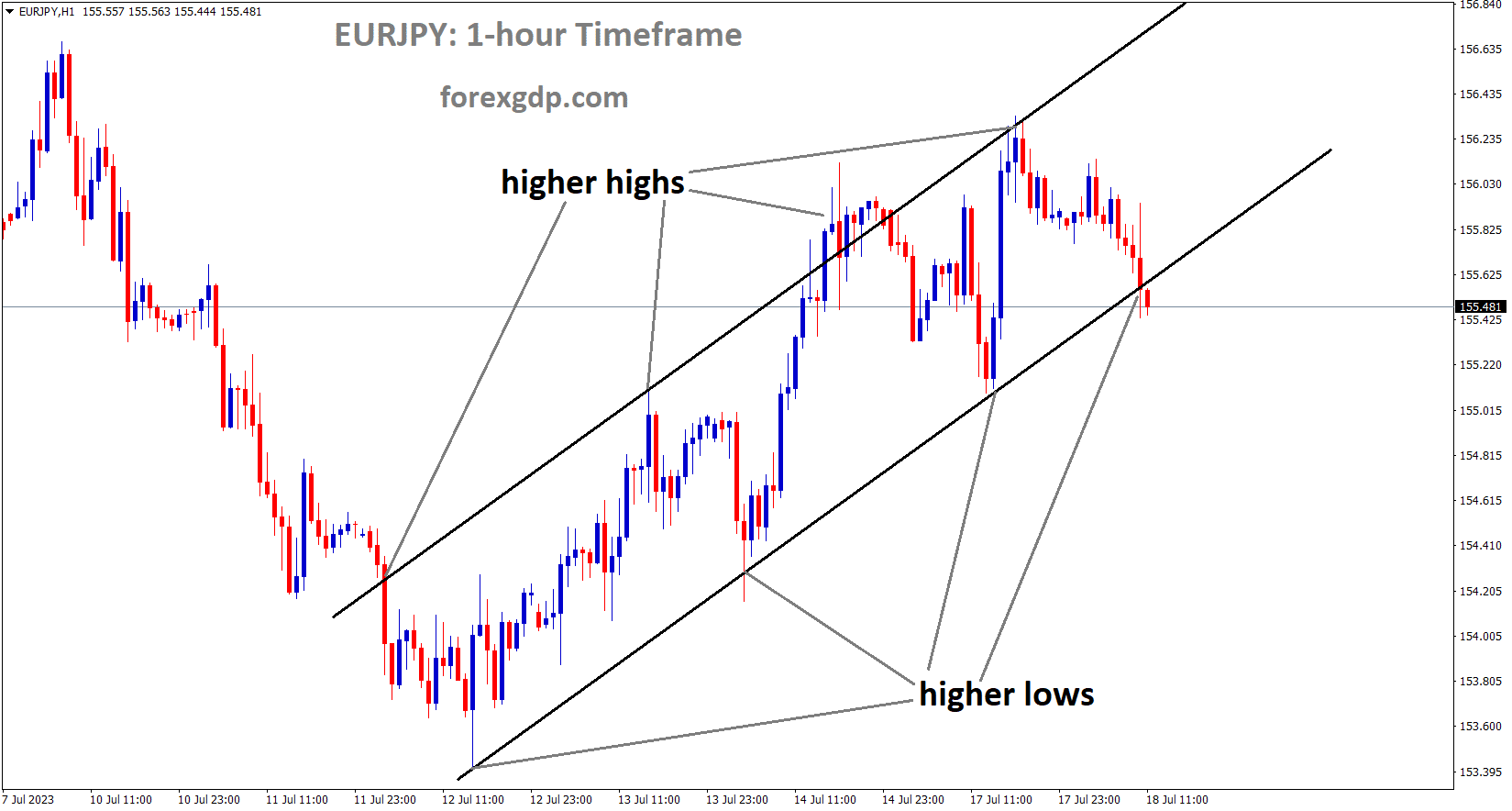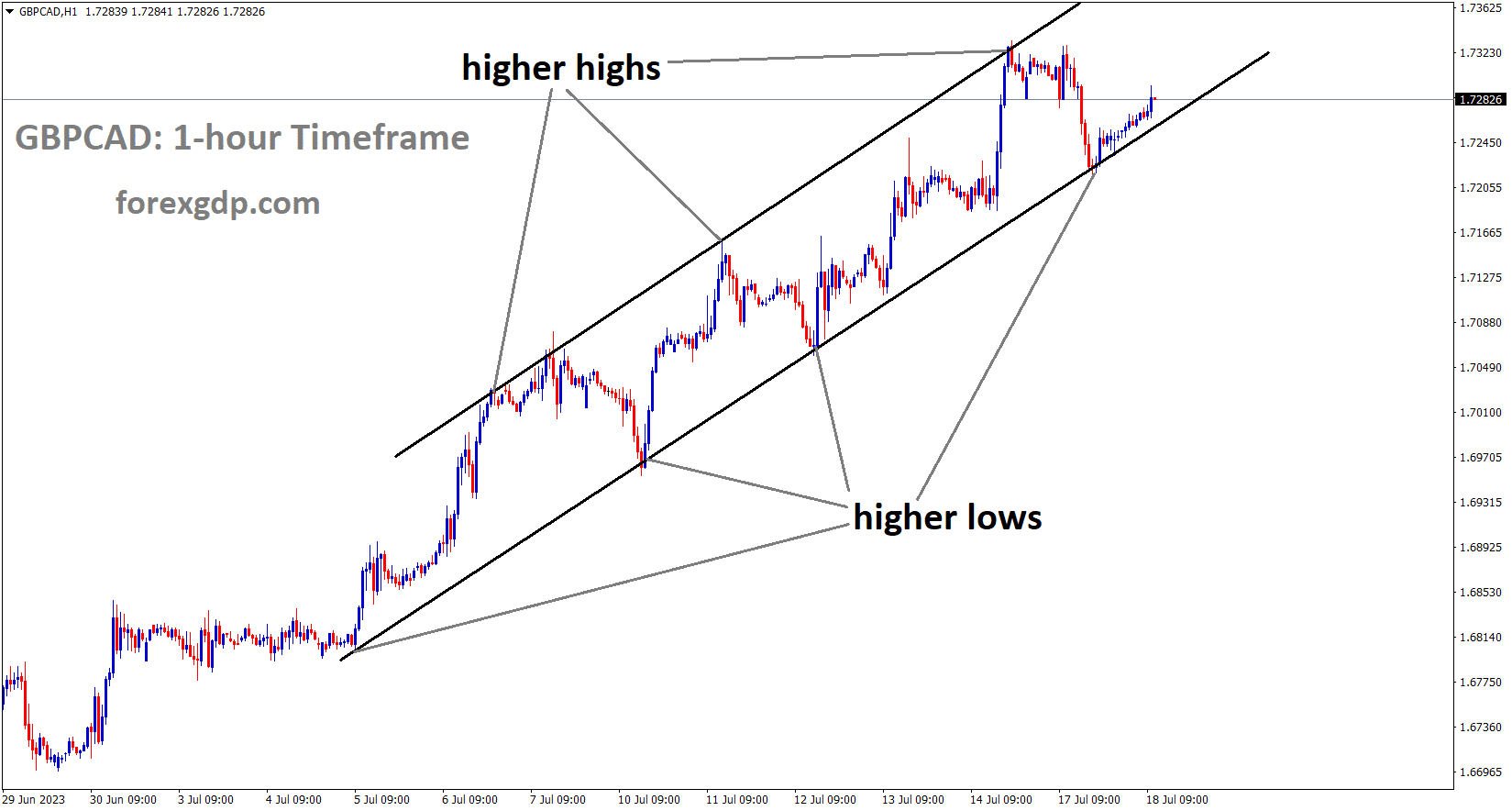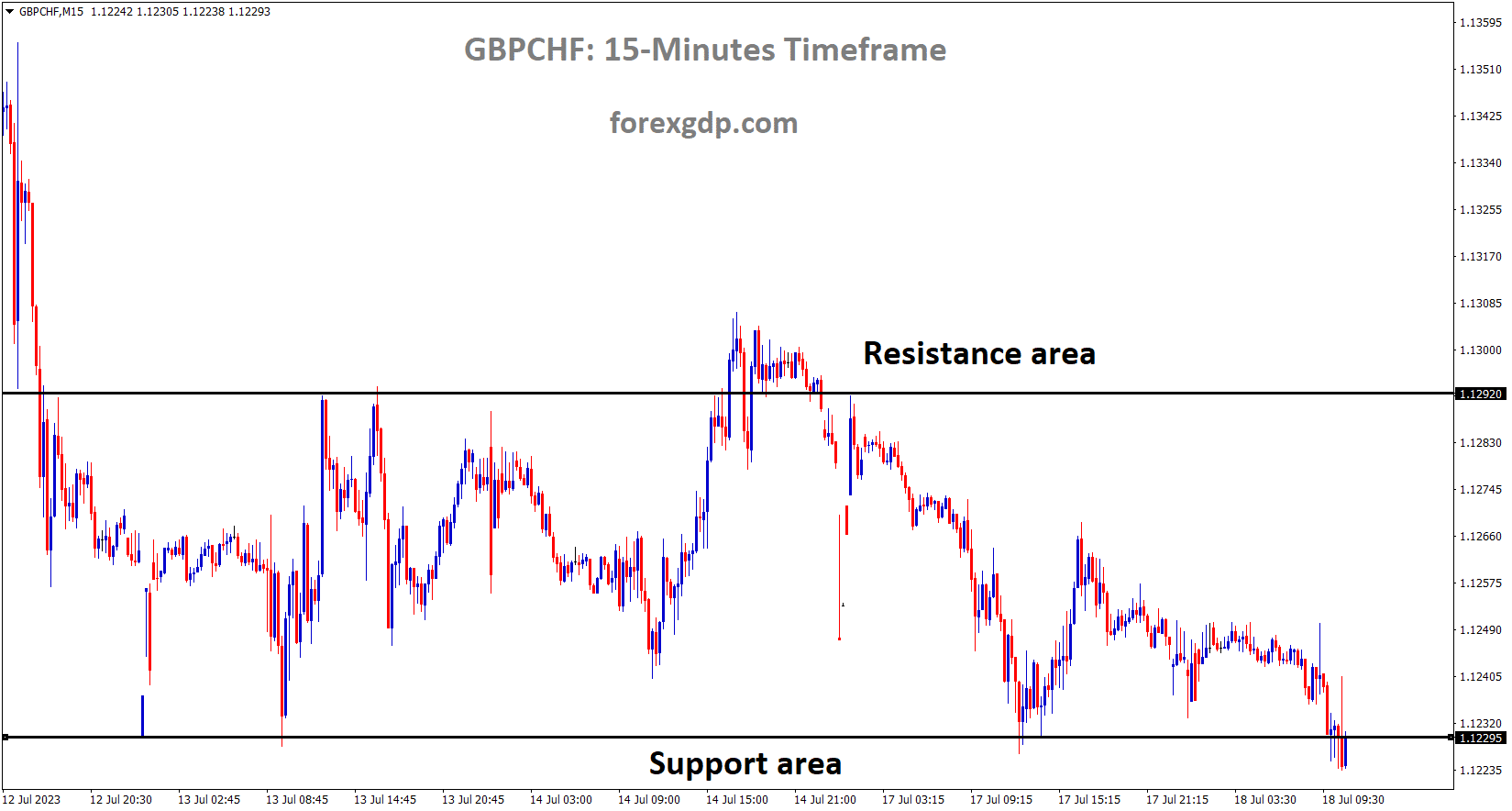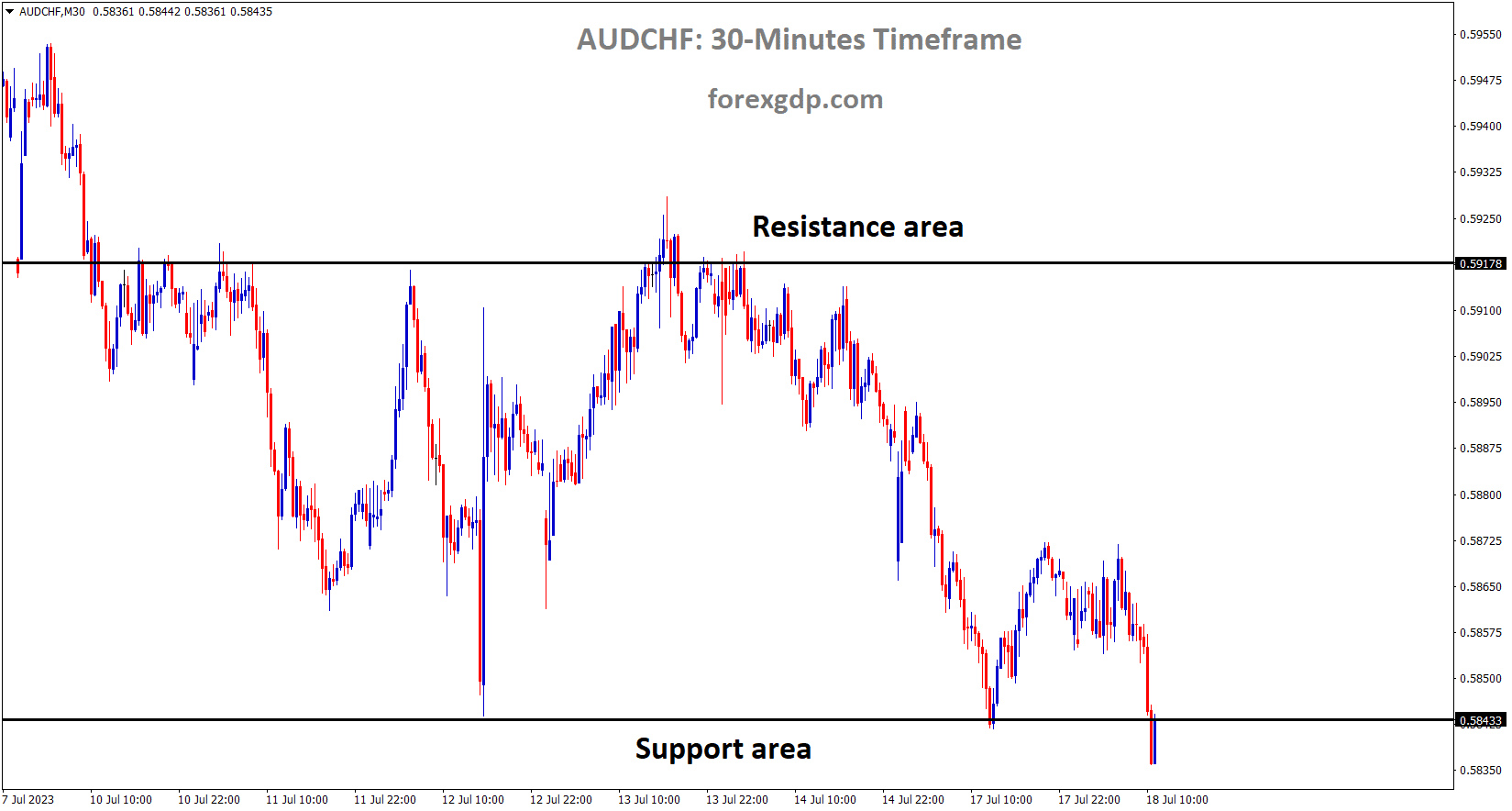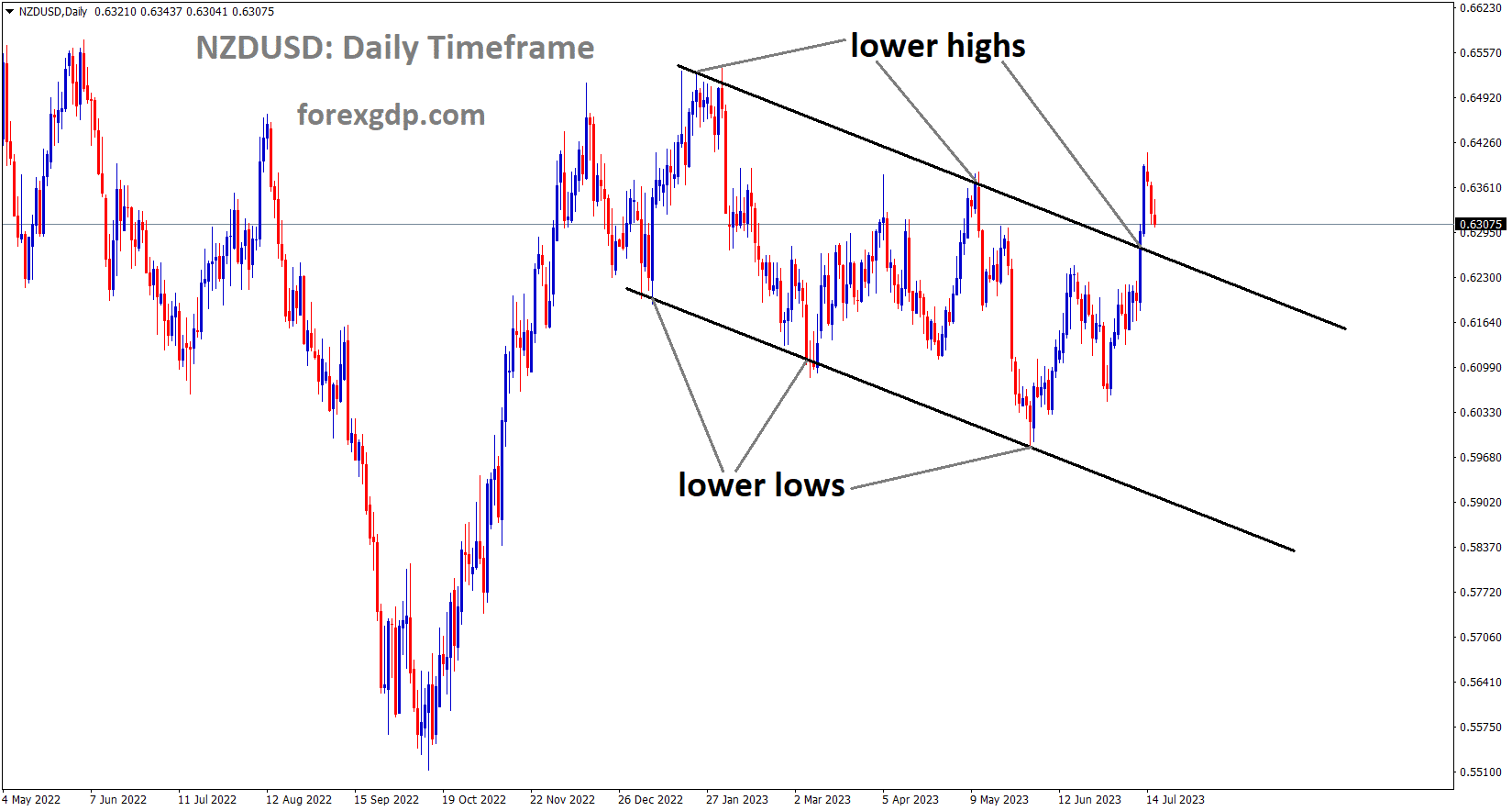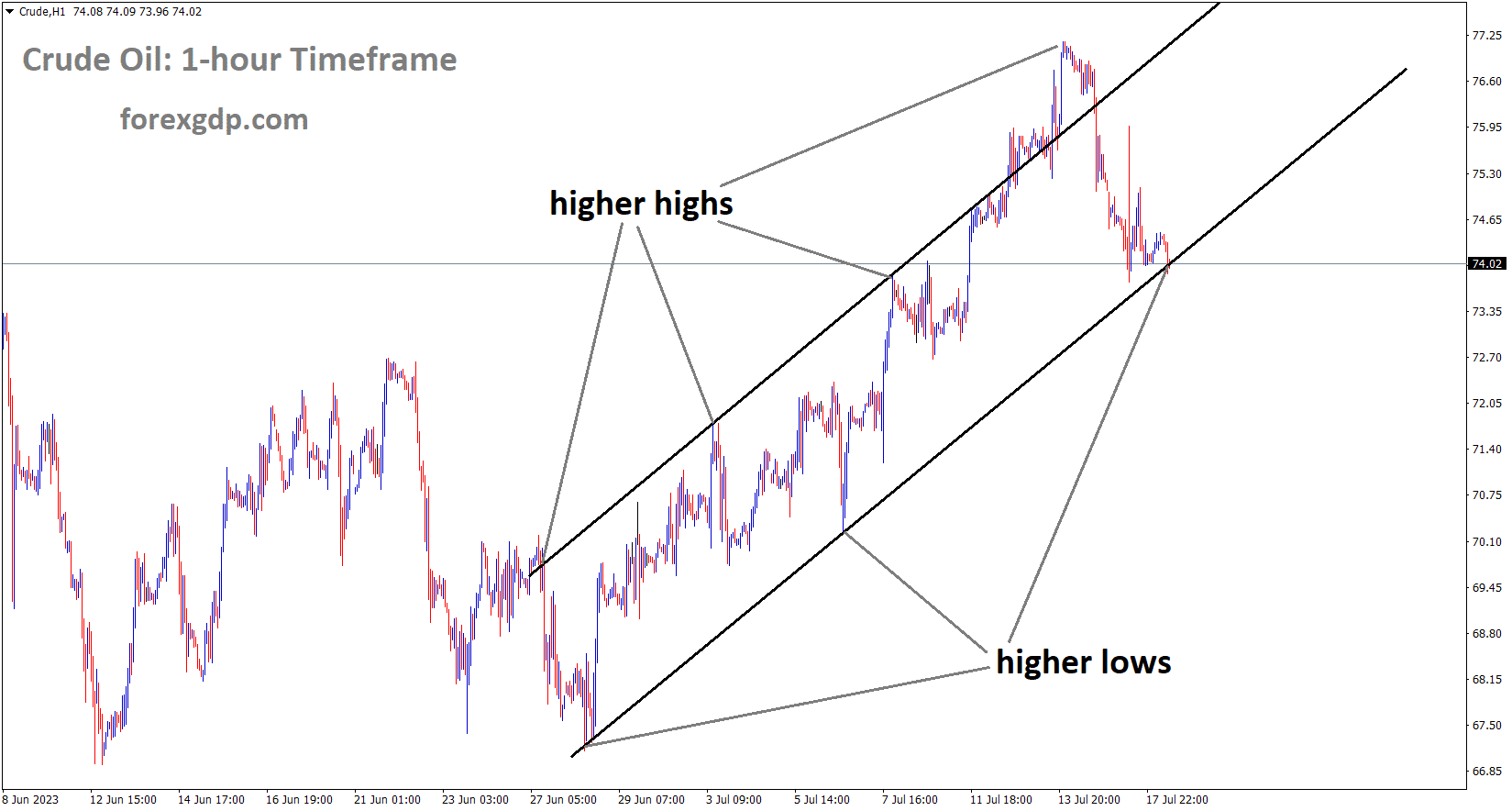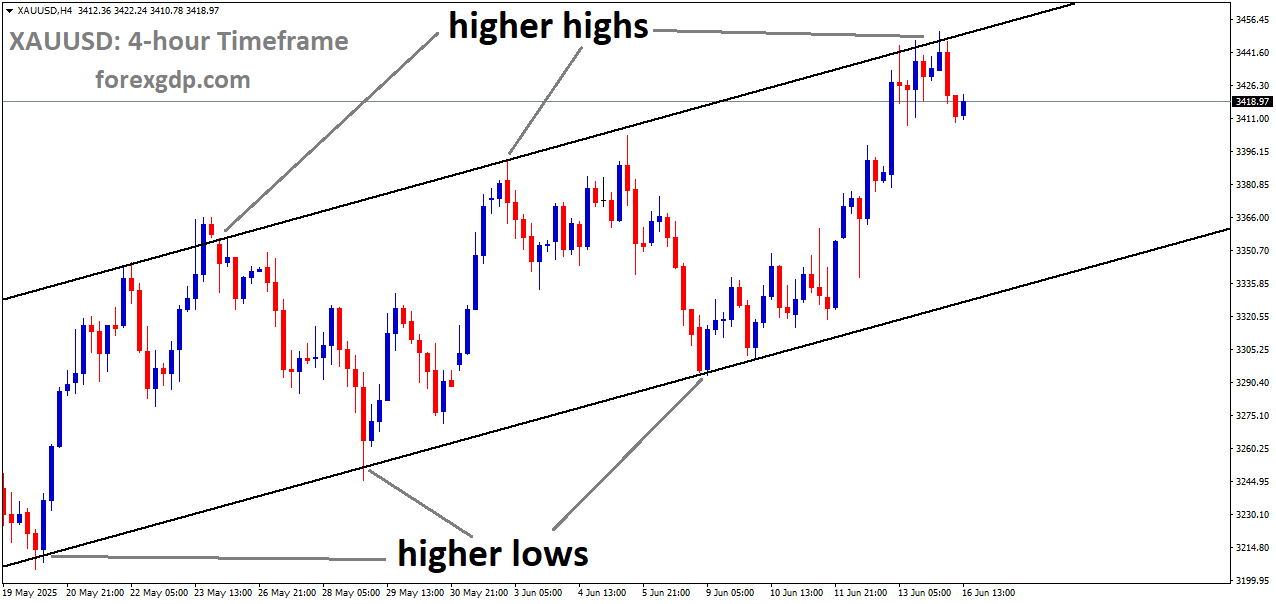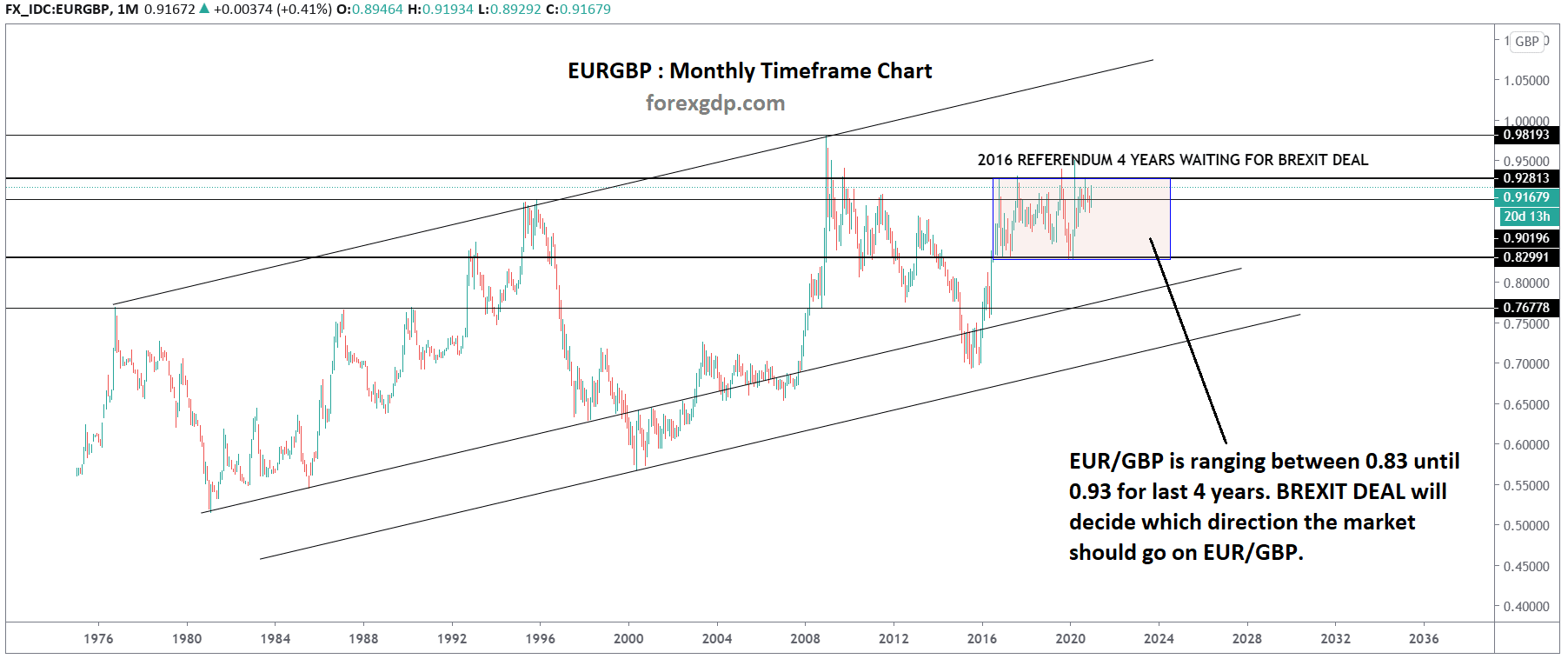GBPJPY Analysis
GBPJPY is moving in an Ascending channel and the market has reached the higher low area of the channel.
This month, the Bank of Japan likes to make changes to its YCC policy because household forecasts for inflation in FY2023 are higher than the target of 2%. Increases in wages and employment lead to higher consumption; declines in unemployment have the opposite effect.
Speculations that the Bank of Japan (BoJ) may modify its Yield Curve Control (YCC) policy as soon as this month continue to support the JPY. Actually, the BoJ is expected to increase its inflation forecast for FY2023, which has been above the target of 2% for more than a year and should put pressure on the central bank to start winding back its ultra-loose monetary policy settings. Aside from this, losses for the safe-haven JPY should be limited due to concerns about a global economic downturn, which were stoked by a weaker Chinese GDP print on Monday.
XAUUSD Analysis
XAUUSD Gold price is moving in an Ascending channel and the market has rebounded from the higher low area of the channel.
This week’s US retail sales and industrial production data are anticipated to increase from last week’s levels, and gold will move in the direction indicated by the data. At the G20 summit, US Treasury Secretary Janet Yellen stated that we are being more watchful of Chinese outbound investments. To mobilise the business between the US and China smoothly, we need to put in more groundwork.
Despite picking up bids early in Tuesday’s Asian session, the price of gold XAUUSD remains defensive at $1,955, as market participants wait for the United States Retail Sales data to resolve the ambiguity on the trading floor. XAUUSD traders have recently been stimulated by pre-data anxiety, mixed worries about China and the US Dollar’s failure to cheer the most recent positive data, as well as the market’s cautious optimism. The price of gold declined to $1,945 at the start of the week before closing down around $1,955 and forming a Doji candlestick on the daily formation. The same suggests that, despite recent improvements in sentiment, XAUUSD traders are still cautious and unsure of their next move. Wall Street ended the day with modest gains, reflecting the mood, and US Treasury bond yields were slightly lower, which in turn weighed on the US Dollar Index DXY and helped the Gold Price rediscover its allure. However, the XAUUSD run-up was supported by Monday’s underwhelming US data, worries about China’s economic recovery, and a desire for no significant hawkish moves from top-tier central banks.
Empire State Manufacturing Index for July in New York NY eased to 1.1 on Monday from 6.6 the previous month and 0.0 market expectations. The US Dollar Index’s DXY recovery on Friday, supported by the upbeat readings of the University of Michigan’s UoM Consumer Sentiment Index and consumer inflation expectations for the same month, weighed on the DXY after the data initially failed to excite DXY sellers. However, China’s headline statistics confirmed market concerns that Australia’s largest customer is experiencing economic difficulties, which in turn joined US-China conversations to raise alarms about Beijing. However, China’s second quarter Q2 2023 Gross Domestic Product GDP eased below analysts’ expectations of 7.3% while increasing above the prior readings of 4.5% to 6.3%. In addition, the Industrial Production growth accelerated to 4.4% YoY in June as opposed to the expected 2.7% and 3.5%. However, the retail sales fell to 3.1% from a previous 12.7% and a market expectation of 3.2%. It should be noted that the survey-based unemployment rate for people aged 24 in China increased to a record high of 21.3% in June.
In another interview with Bloomberg, US Treasury Secretary Janet Yellen stated that the US is carefully examining outbound investment controls on China, but added, “But they would be focused on a few sectors.” The decision-maker also made it clear that these would not be extensive restrictions that would fundamentally alter China’s investment environment. At a gathering of the Group of 20 G20 finance ministers and central bankers over the weekend, US Treasury Secretary Janet Yellen said, “I am eager to build on the groundwork that we laid in Beijing to mobilise further action.” As a result, the US-China tension is once again in the news, but the level of pessimism seems slow and inconsistent. It is important to note that the recent economic uncertainty is likely to cause the policy hawks at the European Central Bank ECB, Federal Reserve Fed, Bank of England BoE, Bank of Canada BoC, and Swiss National Bank SNB to lose steam. This will support the upward movement of the gold price. Moving on, it will be crucial to keep an eye on US retail sales for June, which are predicted to increase to 0.5% from 0.3% in May. The US Industrial Production for June, which is forecast to decline by 0.1% from the previous -0.2%, the headlines regarding China and the bond market, as well as Japan’s return from a long weekend, will all be crucial.
USDCAD Analysis
USDCAD is moving in the Descending triangle pattern and the market has rebounded from the horizontal support area of the pattern.
The 25 bps rate increase by the Bank of Canada last week makes the CAD stronger against other currency pairs. More than anticipated Canadian CPI data for the month of June is scheduled for release this week. If the BoC raises rates further, the CAD will appreciate against the USD.
USD index Analysis
USD index has broken the Descending triangle pattern in downside.
At a meeting in China, US Climate Envoy John Kerry asserted that the differences between the two nations would soon be resolved. Joe Biden, the US president, has a more solid rapport with China. We soon declare that our collaborative business dynamics have significantly changed the world.
John Kerry, the US climate envoy, said to Wang Yi, China’s top diplomat, during their meeting on Tuesday, “Our hope is now that this could be the beginning of new cooperation to solve the differences between us. President Biden is steadfastly committed to maintaining the US-China relationship and working with China to advance initiatives that can significantly alter the course of the world. President Xi and Biden value each other’s friendship. Biden anticipates being able to advance and alter the situation.
EURJPY Analysis
EURJPY is moving in an Ascending channel and the market has reached the higher low area of the channel.
Ignazio Visco, a member of the ECB Governing Council, stated that while the manufacturing sector is slowing and inflation in the Euro Zone is falling more quickly than anticipated this year, the services sector, such as tourism, is booming. In Euro regions this year, the likelihood of a recession is low.
Ignazio Visco, a member of the ECB Governing Council, stated on Tuesday that “inflation may decline more quickly than anticipated. Production is declining, but services like tourism are increasing. The rate of inflation may fall faster than anticipated. We do not need a recession, in my opinion.
GBPCAD Analysis
GBPCAD is moving in an Ascending channel and the market has rebounded from the higher low area of the channel.
This week, the UK CPI MoM June Month data is scheduled for release. 8.2% is anticipated after the previous reading of 8.7%. Due to increased household spending requirements and higher interest rates for side businesses, price fixing is becoming more prevalent.
A 5.0% interest rate increase is the Top variant tool that the Bank of England has already used. So far. Still, there is no other plan to reduce UK inflation. However, the government is confident that higher rates will result in a decline in inflation by year’s end.
As investors turn their attention to the United Kingdom Consumer Price Index CPI data, which will be released on Wednesday at 06:00 GMT, the Pound Sterling GBP has dropped significantly to close to 1.3060. The Bank of England BoE has been forced to continue its aggressive policy-tightening phase in order to get inflation back to the desired levels, which has caused the GBP/USD pair to decline as investors hope that core inflation will remain high. In turn, this would make Britain’s economy less likely to prosper. Households will bear the burden of higher borrowing costs and soaring inflation, even though the central bank of the United Kingdom would be forced to raise interest rates even further. The housing sector is next to be affected by inflationary pressures after expensive items. The corporate sector in the UK is concerned and thinks that the spring’s burst of business optimism has faded under the weight of inflation and rising interest rates. Before the release of the UK’s inflation data, the pound sterling corrected below 1.3100. Since then, it has recovered. According to consensus, the monthly headline CPI was 0.4% slower than it had been the month before 0.7%. While annualised inflation is anticipated to slow down to 8.2% from the previous release’s 8.7%. The core rate of inflation, which excludes volatile energy and food costs, is anticipated to hold steady at new highs of 7.1%. The burden on households is anticipated to rise as a result of the elevated Core Consumer Price Index.
GBPCHF Analysis
GBPCHF is moving in the Box pattern and the market has reached the horizontal support area of the pattern.
Large variations in the CPI and labour cost index have already made it necessary for households to delay the purchase of expensive items. According to the UK’s property website Rightmove, the housing sector in the country is under stress as a result of a decline in home purchases brought on by higher interest payments. A persistent inflation report would undoubtedly prompt the Bank of England to raise interest rates for the second time in a row.
Investors should be aware that Andrew Bailey, the governor of the BoE, already increased interest rates to 5%. Hot inflation is anticipated to worsen the UK’s economic outlook even further by forcing BoE policymakers to make hawkish comments. In the meantime, a Deloitte quarterly survey revealed that British businesses are being very conservative in the face of high inflation and rising interest rates. Globally, the market is in a cautious mood as we approach the second-quarter results season.
The monthly United States Retail Sales data, which will be released on Tuesday at 12:30 GMT, has investors’ attention as the US Dollar Index DXY is choppy early on Monday below 100.00. Austan Goolsbee, a banker with the Chicago Federal Reserve Fed, stated on Friday that although inflation is gradually falling, it is still higher than the Fed prefers. Goolsbee reaffirmed that policymakers at central banks are following a golden path to keeping inflation under control without starting a recession. Market participants are still debating whether the Fed will announce two more rate increases this year or end the period of policy tightening with just one rate increase. Christopher Waller, the governor of the Federal Reserve, said last week that two additional interest rate increases are still appropriate for the year.
AUDCHF Analysis
AUDCHF is moving in the Box pattern and the market has reached the horizontal support area of the pattern.
The Chinese Ministry of Commerce announced the steps taken so far to increase consumer purchasing needs and household goods. Numerous online platforms are being used as measures to simplify household purchases.
A number of initiatives to increase household consumption of goods and services were announced by China’s Commerce Ministry on Tuesday. will encourage businesses to develop online service platforms for consumer services for the home. will begin a promotion for consumer goods for the home. will increase credit support for the purchase of household goods
According to Australian Treasurer Jim Chalmers, China’s economic slowdown is a worry for Australian exports and inflation is a major concern, necessitating further rate increases.
During his speech on Tuesday, Australian Treasurer Jim Chalmers discussed the outlook for inflation and interest rates. The need for additional rate increases is still uncertain. Although it is reducing, inflation is still a serious concern. The slowdown in China’s economy worries Australia.
NZDUSD Analysis
NZDUSD is moving in the Descending channel and the market has reached the lower high area of the channel.
It is anticipated that the NZD CPI data for the second quarter of 2023 will be 5.9%, down from 6.7% in the first quarter. As of mid-2022, New Zealand’s inflation rate will be at a three-decade high of 7.3%. After 12 straight rate hikes, the RBNZ paused this month’s rate increase and maintained a neutral rate of 5.50%.
In a survey of 14 economists conducted by Bloomberg News, the median estimate for consumer prices showed a 5.9% increase from a year earlier. That would represent a significant decline from the first quarter’s 6.7% and the lowest reading since 2021. It would also fall short of the 6.1% forecast made by the Reserve Bank. The data will be released by Statistics New Zealand on Wednesday in Wellington. After reaching a three-decade high of 7.3% in mid-2022, inflation has been edging lower. Now that petrol prices are falling and mortgage rates are rising, economists anticipate a sharper decline in household spending. Wednesday’s CPI print should confirm that inflation is past the peak, said Jarrod Kerr, chief economist at Kiwibank. A further slowdown in consumer spending is anticipated because households are becoming less willing to spend money on items that are not absolutely necessary and because another 40% of mortgages will need to be refinanced in the upcoming year.
The RBNZ held the Official Cash Rate at 5.5% last week, marking the first pause after 12 straight hikes, but stated that tight policy will need to be maintained for some time to come in order to guarantee that inflation returns to its 1-3% target range. The economy has stalled as a result of the bank’s 525 basis point tightening since October 2021, which is the most pronounced since the OCR was introduced in 1999. Even though growth may have resumed in the second quarter, three of the biggest banks in the country predict that another recession will begin later this year. The gross domestic product shrank in the final months of 2022 and the first quarter of this year. In May, the RBNZ predicted that no further rate increases would be required. The majority of economists agree, though a few still predict one more increase to 5.75% later in 2023.
Crude Oil Analysis
Crude Oil price is moving in an Ascending channel and the market has reached the higher low area of the channel.
After a sharp decline on Friday, the loonie trades hardly changed. According to Scotiabank economists, the Tuesday CPI data from Canada will be crucial in determining how far the CAD slide goes. The USD recovery threatens to undo at least some of the CAD strength that it has built up over the past week following the Bank of Canada rate hike, which is why the CAD slipped off its high on Friday far too easily. There is not much information available today Wholesale Sales for May are predicted to increase 1.0% in the month, but CPI data on Tuesday could play a significant role in determining how far the CAD slide goes in the near term headline predicted to drop to 3.0%, the BoC’s medium term target range. In the short term, lower inflation might put a little more pressure on the CAD, but policymakers have made it clear that progress above 3% is anticipated to be more difficult to achieve. This will not serve as a signal that everything is clear. In the short term, the CAD may ease a little bit more before improving.
Don’t trade all the time, trade forex only at the confirmed trade setups.
Get Live Free Signals now: forexgdp.com/forex-signals/

